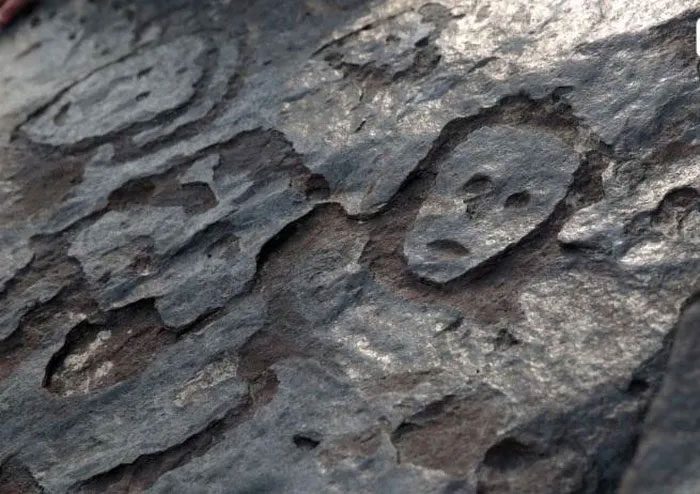Human faces carved into stone, dating back approximately 1,000 to 2,000 years, have been discovered along the rock formations beside the Amazon River. These carvings were revealed due to a significant reduction in the river’s water level, the lowest seen in over a century, caused by the most severe drought in the region.

Human faces carved into stone, dating back approximately 1,000 to 2,000 years, have been discovered along the rock formations beside the Amazon River. (Photo: reuters.com)
At Ponto das Lajes on the northern bank of the Amazon River, near the confluence with the Rio Negro and Solimões rivers, there are numerous smooth grooves on the rock believed to be where indigenous residents sharpened arrows and spear tips long before European arrival.
In an interview with the media on October 23, archaeologist Jaime de Santana Oliveira from the Brazilian National Institute of Historic and Artistic Heritage (IPHAN) stated that some rock carvings had been seen by archaeologists in 2010. However, this year’s severe drought, which has seen the water level of the Rio Negro drop by 15 meters since July, has exposed vast areas of rock and sand that have never been visible as beaches before.
According to archaeologist Oliveira, this time he and his colleagues not only found more carvings but also discovered sculptures of human faces on the rock. These engravings are from prehistoric times or the colonial period. While it is not yet possible to precisely date these carvings, based on evidence of human presence in the area, archaeologists estimate they are approximately 1,000 to 2,000 years old.


















































